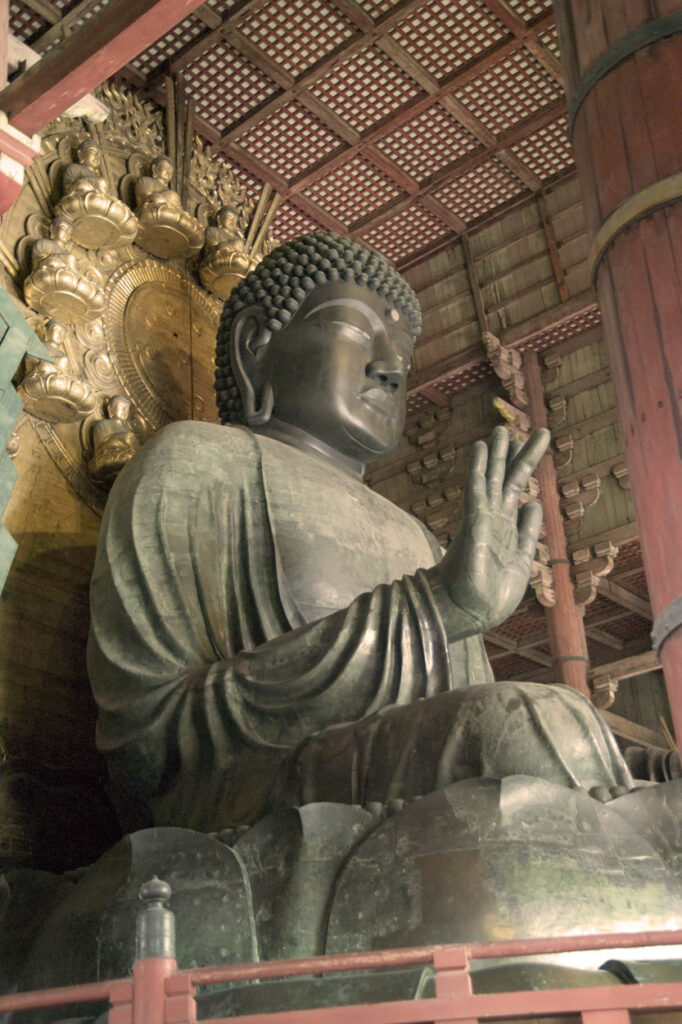Prince Shotoku (574-622)
According to the Nihonshoki (Chronicle of Japan), Buddhism officially entered Japan from Korea in 552, when King Seong of Baekje sent a mission to Emperor Kinmei that included a gilded statue of the Buddha, and a number of sutras. The emperor gave the statue to the Soga clan, which supported Buddhism, and in 584, the Soga aristocrats proceeded with the monastic ordinations of three nuns with the help of a Korean monk and nun.
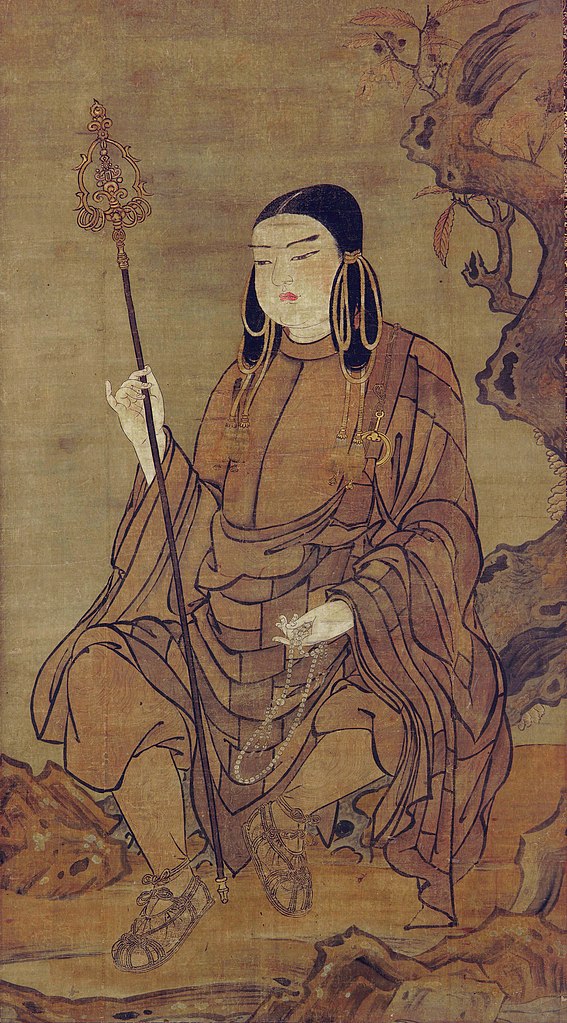
In 592, the Soga clan defeated the rival clan of the Mononobe, which supported indigenous kami, and the granddaughter of the head of the Soga was enthroned as the Empress Suiko. Serving as her regent, Prince Shotoku (574–622), regarded by many Japanese as the founder of the Japanese state, drew up the Seventeen-Article Constitution, and composed three Commentaries on Buddhism, which played an important role in the development of Buddhism in Japan over the following centuries.
Thomas Kasulis explains that Confucianism, which had entered Japan in the early fifth century with the introduction of writing, had provided the new state with basic foundations. Prince Shotoku was therefore faced with the task of harmonising Buddhist values with Confucian principles as well as native proto-Shinto worship. By and large, what resulted is a Japanese state with a hierarchical Confucian socio-political system, headed by an emperor (or an empress) whose authority was based on descent from the sun kami Amaterasu, rather than the “mandate of heaven,” as had been the case in China. As for its people, they saw themselves primarily as kami-worshippers, and, for many, at the same time, Buddhist practitioners holding egalitarian values regarding the accessibility of the Dharma to all regardless of their position in society and their karmic situation.
Prince Shotoku’s Buddhist Commentaries focused on three Buddhist sutras, namely, the Lotus Sutra, the Shomon (Skt Srimala) Sutra, and the Yuima (Skt Vimalakirti) Sutra. Though, of course, many other texts were introduced at a later time by monks having traveled to China, it is good to keep in mind that most Japanese learned of the original teachings of the Buddha primarily through texts like the Lotus Sutra, rather than the Pali Canon.
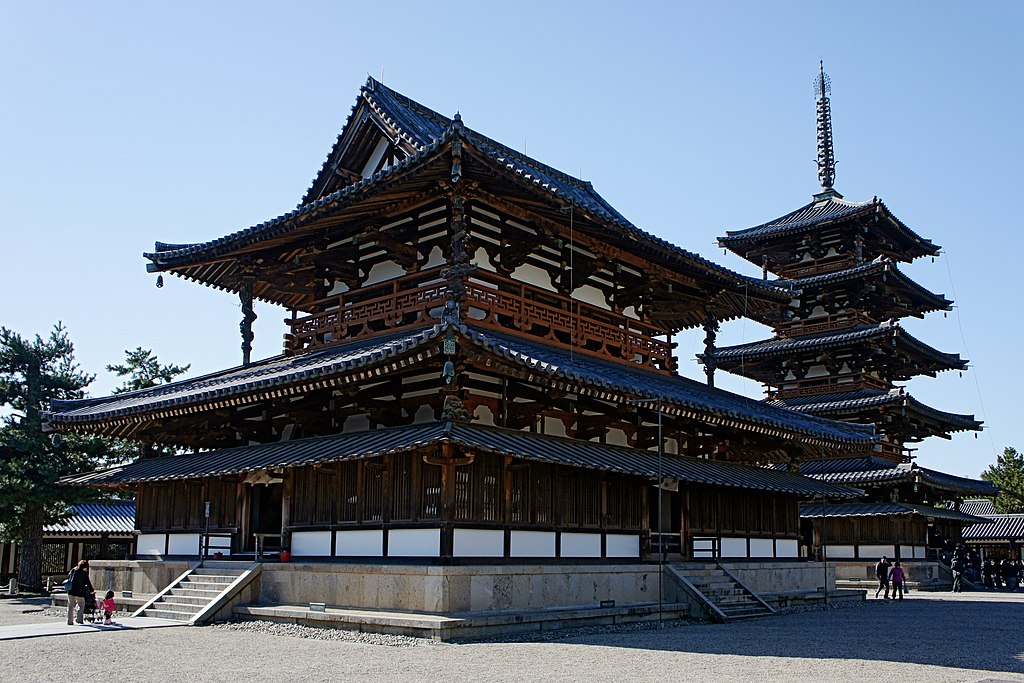
Kasulis writes: “The Lotus Sutra – arguably the most influential sacred text in the history of Japanese Buddhism – emphasizes the universal availability of enlightenment, the need to adapt teachings to the audience, and the theory of the cosmic (or “eternal”) Shakyamuni Buddha that is the source of all other buddhas, including the historical Shakyamuni who founded the religion twenty-five centuries ago … Simply put, the Lotus Sutra stresses inclusiveness …
The Shoman Sutra is the account of an enlightened Buddhist queen Srimala (Jap Shoman). It was selected to highlight the monarch’s responsibility to rule in a manner that encouraged Buddhist praxis.
The third text, the Yuima Sutra, better known as the Vimalakirti Sutra, focuses on an enlightened layman (Vimalakirti) who gives a sermon to celestial beings and the Buddha’s most advanced disciples, stating that emptiness is the ground of both wisdom and compassion. Taken together with the Shoman Sutra, we can see here an emphasis on Buddhism as a religion for a lay sangha in a socio-political context, rather than for individual monks seeking liberation in a monastic setting.
Kasulis lists three threads in Shotoku’s Commentaries: the availability of enlightenment to everyone; a rejection of otherworldly spirituality in favour of social activitism; and a belief in the arising of virtues from the heartmind, which deviates from the Confucian advice that one should model one’s social behaviour on that of the ancient sages. “Overtime the emphasis on mind as intrinsically good would evolve so that Japanese readily accepted the imported assumption that enlightenment is inherent: it need only be realized, manifested, or initialized rather than achieved.” Already hinted at in the influential Awakening of Faith in the Mahayana, and tentatively explored, albeit under other names, in the systematisation work carried out by Zhiyi, the founder of the Chinese Tiantai school, both dating back to the 6th century, as well as in Huineng’s Platform Sutra, and the Chinese Huayan and Chan schools, it is in Japan that the doctrine of inherent enlightenment (hongaku) attained its highest degree of sophistication, first in the Tendai and Shingon schools, but also in Zen, with Dogen putting it at the core of his quest, when he famously asked, “If we are already enlightened, why do we need to practice?” Though it is not explicitly referred to in the writings of the Kyoto School, since terms borrowed from Western philosophy are used in these texts, the hongaku doctrine has clearly shaped the thought of its thinkers, for whom, in Nakamura Hajime’s words “the phenomenal is actually the real.”
The Six Nara Schools
Soon after the death in 622 of Prince Shotoku, the Soga family, which had strongly supported Buddhism, fell from power following a coup that saw the Fujiwara family seize the throne for a period that was to last half a millennium. The event marked the entry of Japan onto the world stage and triggered three ambitious projects. In 710, a new capital city modeled after the Tang capital at Chang’an was built in Nara. In 712, the Kokiji (Record of Ancient Matters) was completed: it was a compilation of native Japanese orature – ancient myths, imperial genealogies, proto-Shinto incantations and poetry. In 720, the Nihonshoki (Written Chronicle of Japan) was written in a style mimicking the dynastic histories of China, to promote the new nation when meeting representatives of other countries.
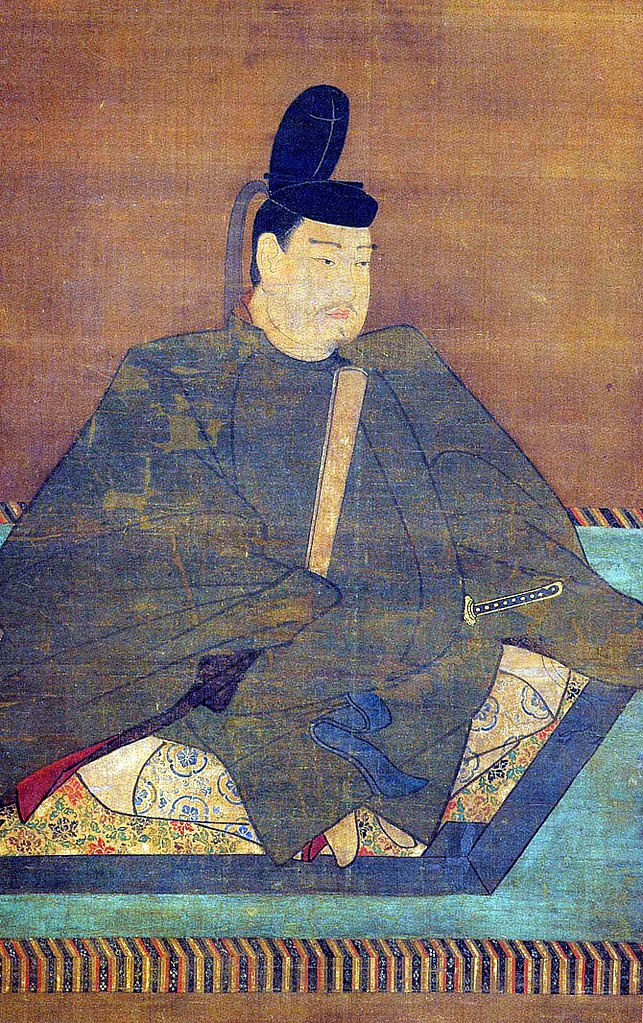
The Nara period (710–784) saw a continuous flow of Buddhist teachings imported from China. It also benefited from the support of Emperor Shomu (r. 724-749) who had the Great Temple to the East (Todai-ji) built, and retired early from the throne to become a monk. This led to the establishment of the Six Nara Schools – Ritsu, Kusha, Jojitsu, Sanron, Hosso, and Kegon – four of them Mahayana: Sanron, Hosso, Kegon and the quasi-Mahayana Kusha school. None of the six schools exist today in Japan as prominent forms of Buddhism in their own right. In the case of the Kegon school, however, even though it has not survived as a school in Japan, its vision of reality has been adopted by most Japanese Buddhist schools, including the near-contemporary Kyoto School. In Thomas Kasulis’ words, the Kegon school, derived from the Chinese Huayan school, held that “the totality of reality is so intertwined that each thing ultimately depends on the existence of every other thing.” Not just “some other thing or things” as taught by Sakyamuni Buddha in the doctrine of co-dependent origination, but “each thing is interdependent with everything else.” In its deepest formulation, “the phenomena are interrelated by their own intrinsic nature rather than linked by external principles. Hence, it is a shift from an externally related world view to an internally related one.”
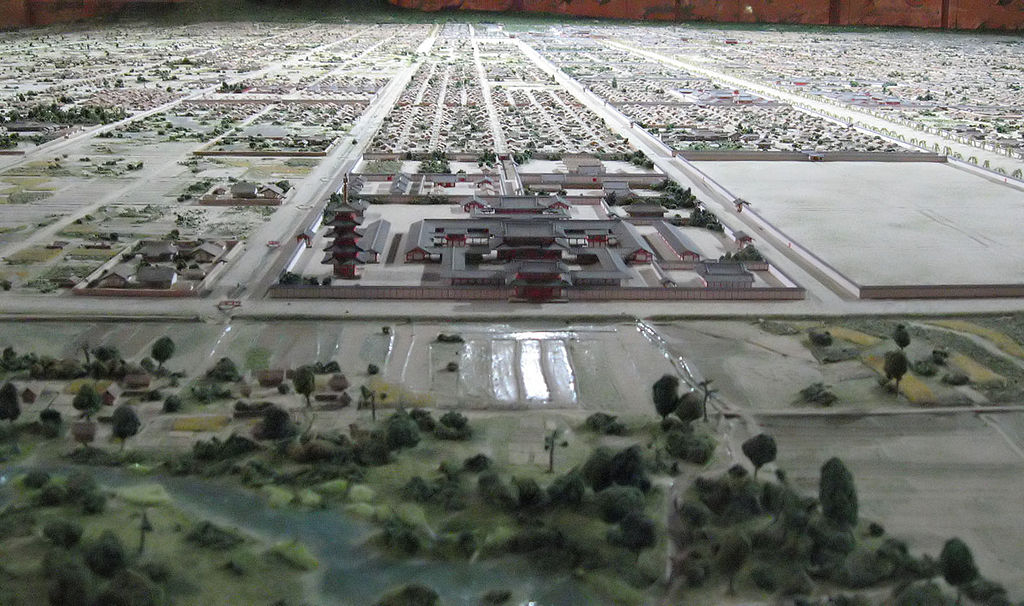
Saicho and Kukai, founders of the Tendai and Shingon Schools
In 794, the capital was moved again, this time to Heian-kyo (present-day Kyoto), and the Heian period (794-1185) started. Just as important from the standpoint of the development of Buddhism was, in 804, a government-sponsored expedition to China, in which Saicho (766/7-822) and Kukai (774–835) took part. Saicho wanted to secure the lineage of the Chinese Tiantai school in order to obtain from the emperor of Japan the official authorisation to found the Japanese Tendai school. Kukai wanted to learn more about the Mahavairocana Tantra, which had become quite sought out in China, where a new interest in esoteric teachings had developed. Under the Japanese name of Dainishi, the Sun Buddha, Mahavairocana is referred to by scholars as the Cosmic Buddha, Buddha as the whole reality, or the whole reality as Buddha, that is, as “suchness” or “thusness.” The two men did not know each other, and did not travel on the same ship in a fleet counting four ships. In addition, their ships did not land at the same Chinese harbour. It is therefore unlikely that they met during the trip, though some believed they did. After their return to Japan, they did develop a friendly relationship that lasted for several years (before breaking down when their two schools came to compete with each other), which allowed Saicho, the founder of the Japanese Tendai school, to receive the esoteric teachings Kukai had been initiated into in China. Whereas these esoteric teachings were regarded as the highest teachings in Kukai’s new Shingon school, Saicho sought to integrate them with the teachings of the Lotus Sutra in the Tendai school.
Source:
Thomas P. Kasulis – Engaging Japanese Philosophy
